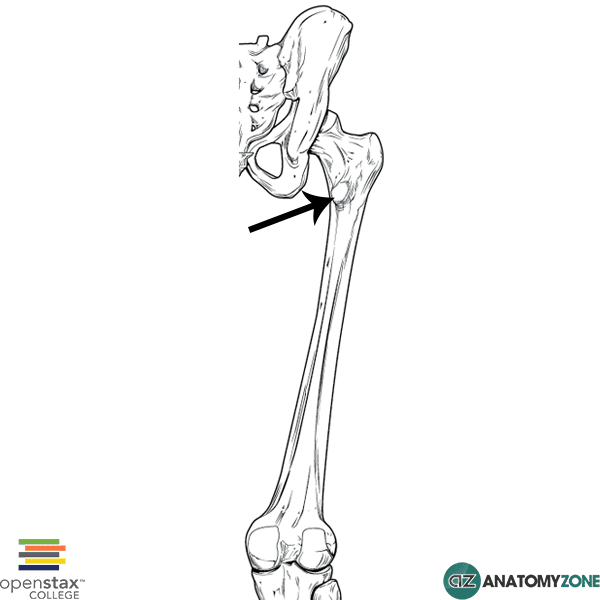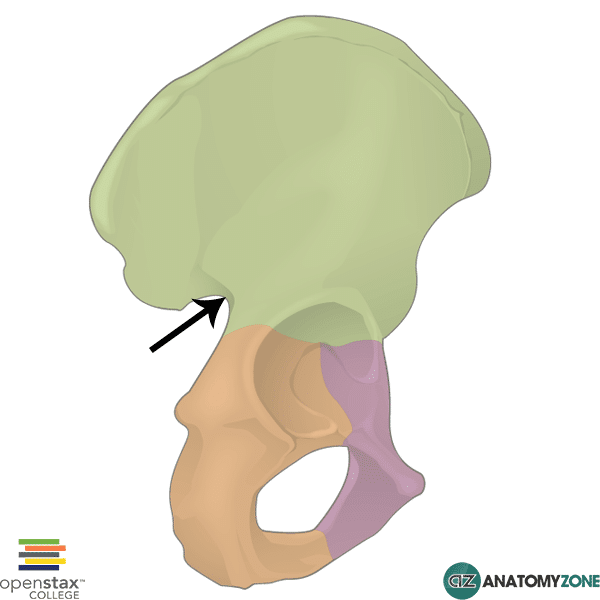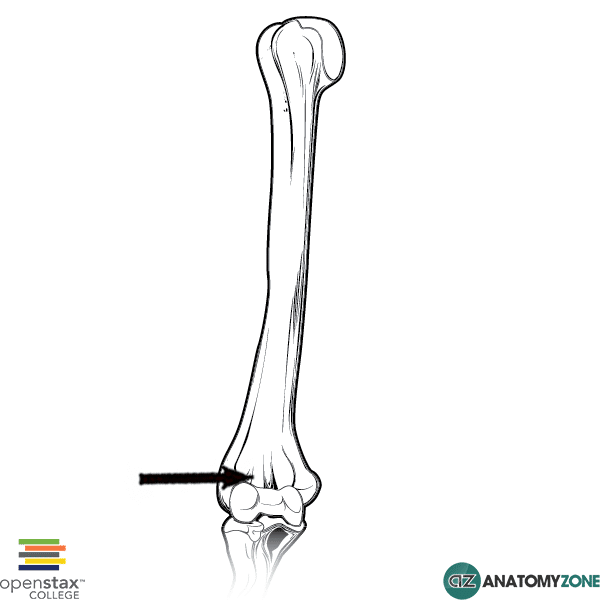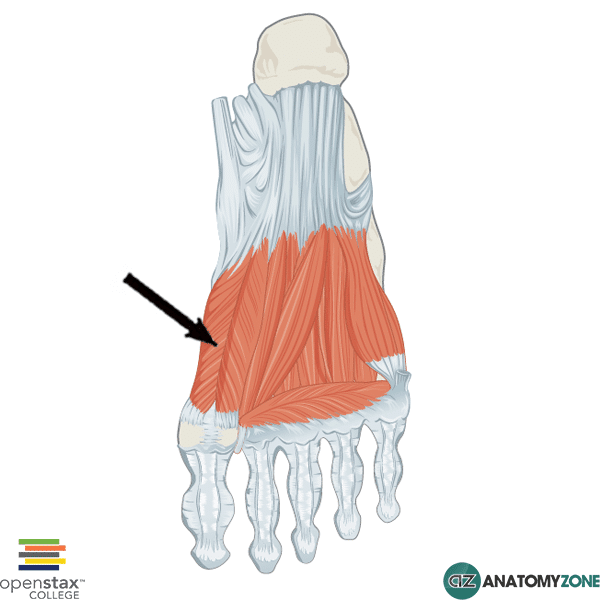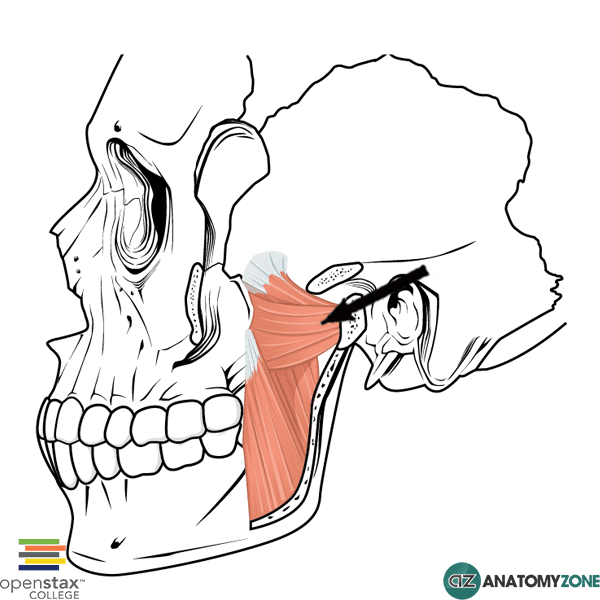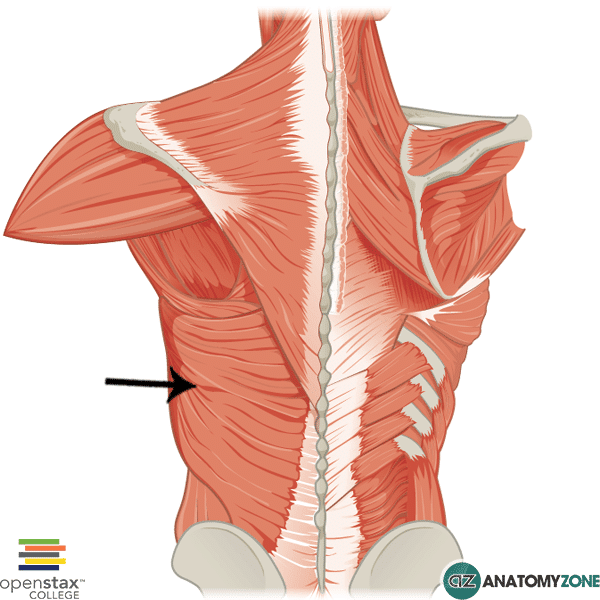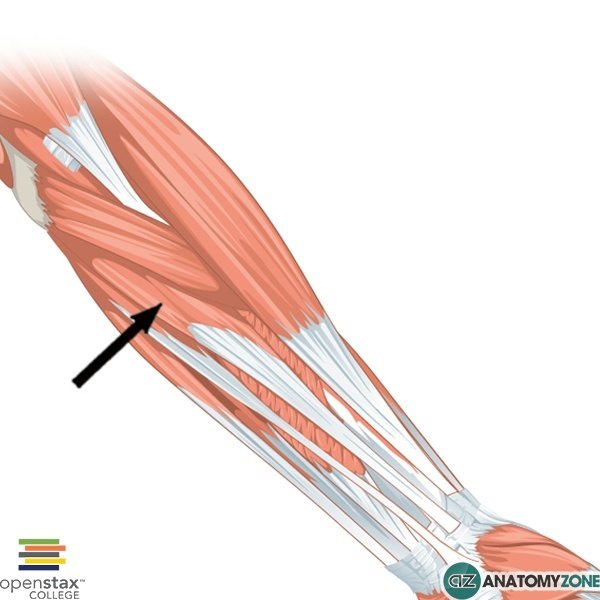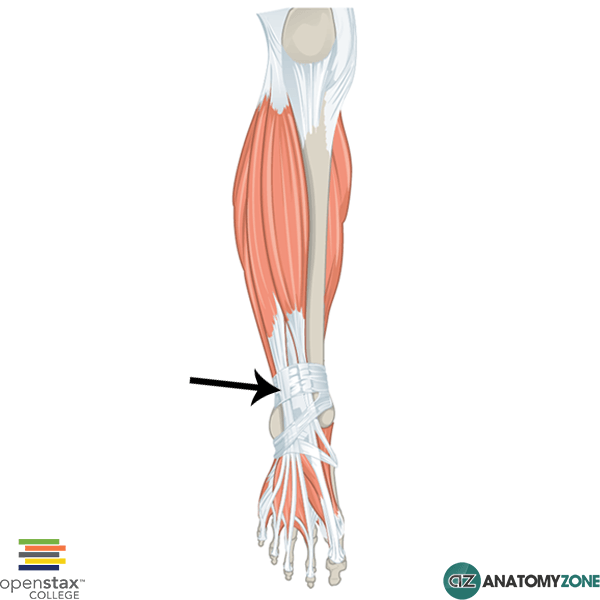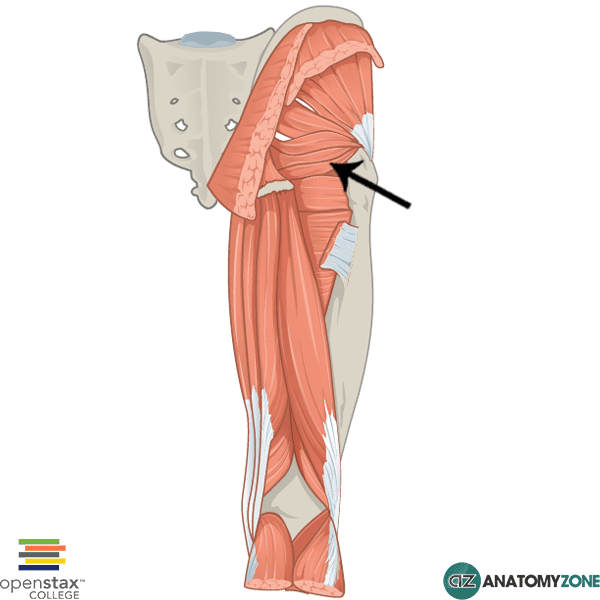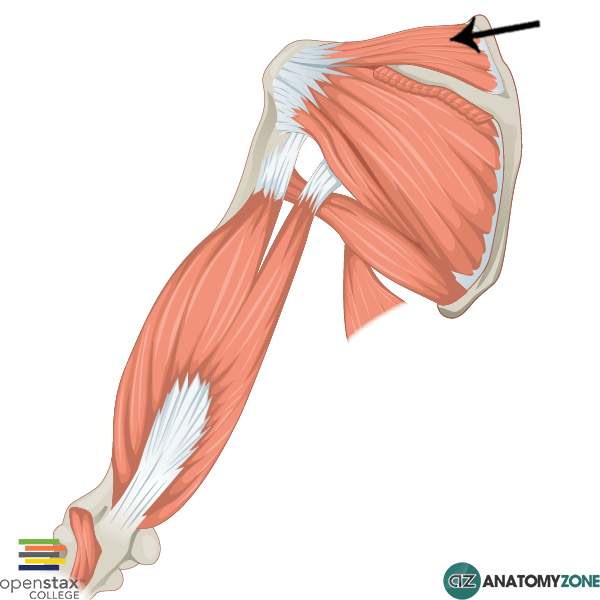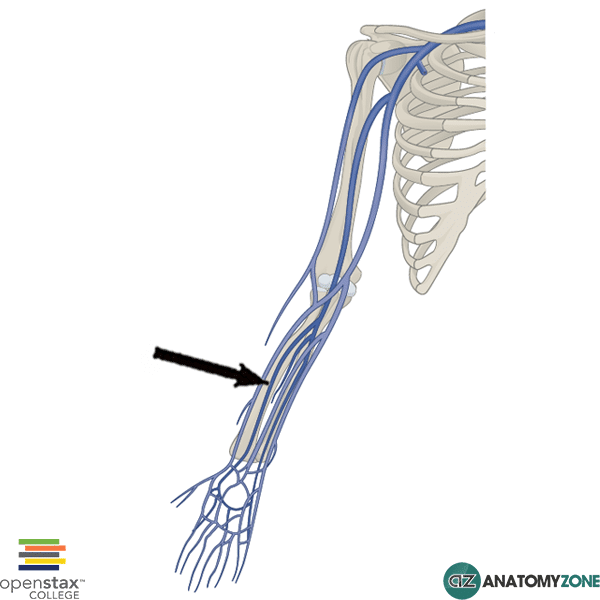The structure indicated is the supraspinatus muscle.
The supraspinatus muscle is one of the four muscles of the rotator cuff. The rotator cuff muscles are located in the posterior scapula region and serve to stabilise the glenohumeral joint. There are 4 rotator cuff muscles which can be remembered using the mnemonic SITS:
- Supraspinatus
- Infraspinatus
- Teres minor
- Subscapularis
The supraspinatus and infraspinatus, as their names suggest originate in the fossae above and below the spine of the scapula respectively (supraspinatous and infraspinatous fossae). The supraspinatus, infraspinatus and teres minor muscles insert on to the greater tubercle of the humerus on the superior, middle and inferior facets, in that order.
The tendon of the supraspinatus muscle passes underneath the acromion process superior to the glenohumeral joint and attaches on the superior facet of the greater tubercle of the humerus. The function of the supraspinatus muscle is classically described as initiating abduction of the arm at the glenohumeral joint, with the deltoid becoming the main abductor beyond 30 degrees. However, studies have suggested that the supraspinatus works synergistically with the deltoid, stabilising the joint capsule and head of the humerus allowing the deltoid to abduct the arm. Rather than being solely responsible for abduction, studies have suggested that the rotator cuff muscles as a whole, collectively contribute to abduction of the humerus.
Origin: supraspinous fossa of scapula
Insertion: superior facet of greater tubercle of humerus
Action: initiation of abduction of shoulder/assists abduction. Stabilisation of glenohumeral joint
Innervation: suprascapular nerve
Learn more about the anatomy of the rotator cuff muscles in this anatomy tutorial.

